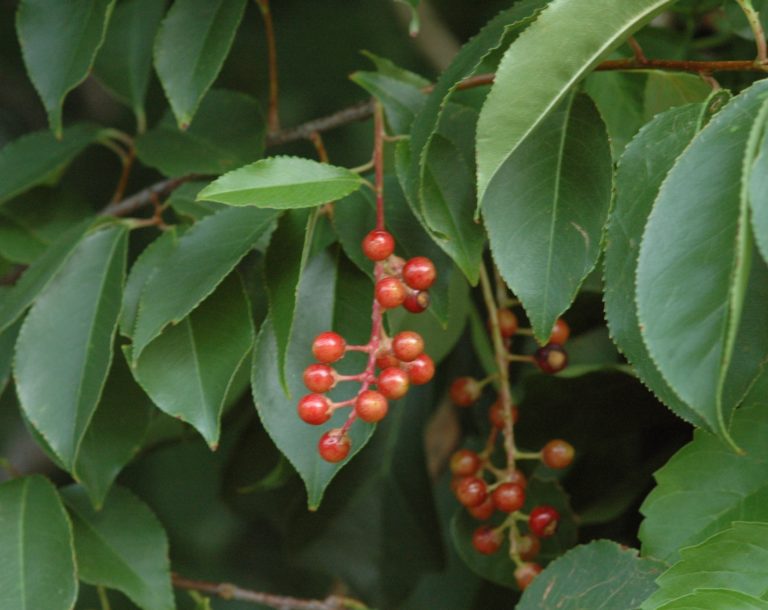The Black cherry is an important southern tree for both wild life and commercially. Young black cherries tend to have a conical crown but when given enough room, the mature trees develop long limbs and arching branches giving it an oval shaped crown. The Black cherry’s fall foliage is a golden yellow. The black cherry tree is very important to wildlife and the flowers attract large numbers of pollinators such as butterflies and native bees. The fruit of the black cherry starts red and ripens to a dark black between August and October. Beloved by over 30 native bird species and many more mammals, the berries are an important food source for wild life. The wood is also prized for industrial purposes and is used for making furniture, toys and scientific instruments. Historically, people have also used the bark to make a cough syrup and the berries can be used to make jelly or wine.
NURSERY HOURS
Wednesday: 10-4 Thursday: 10-6 Friday-Saturday: 10-4 Sunday: 12-4
Prunus serotina

Key Info
Scientific Name: Prunus serotina Ehrh.
Common Names: Black cherry, Rum cherry, Wild black cherry
Family Names: Rosaceae
Plant Type: Tree / Shrub
Leaf Retention: Deciduous
Flower Color: pink, white
Special Characteristics: Flowers fragrant, Fruit edible, Medicinal value, Deer resistant, Interesting bark, Tolerates some drought, Good fall color, Attracts birds, Soil adaptable, Poisonous to humans, Fast growing, Edible fruit (in jams), Attracts bees, Edible fruit, Food source (nectar-to-honey), Attracts butterflies, Showy fruit, Nectar plant, Fragrant
Additional Info
Habit: Conical in youth, tree will open up to have an oval crown in old age with many arching branches
Height: 60'-80'
Spread: 30' to 60'
Soil Conditions: Moist, well drained, occasionally dry soil, organic loam
Leaves: Shiny on upper surface, oblong form with pointed tip and tapering base, finely serrated, turn yellow in fall
Flowers (or reproductive structures: white-pink, many small flowers along drooping racemes, emerge with leaves
Fruit: dark red 'cherries' turn deep black, edible fruits
Natural Distribution: open woods, fence rows, roadsides, old fields, thickets
USDA Hardiness Zone: 3 to 9
USDA Wetland Indicator Status in NC: FACU
Pollination: bees, butterflies, other insects
Wildlife Connections: Attracts large numbers of bumble bees, honey bees, and native bees. Attracts large numbers of insects that eat pest insects. Very important food source for both birds and mammals, is the larval host for Eastern Tiger Swallowtail, Cherry Gall Azure, Viceroy, Columbia Silkmoth, Promethea Moth, Small-eyed Sphinx Moth, Wild Cherry Sphinx Moth, Banded Tussock Moth, Band-edged Prominent, Spotted Apatelodes
